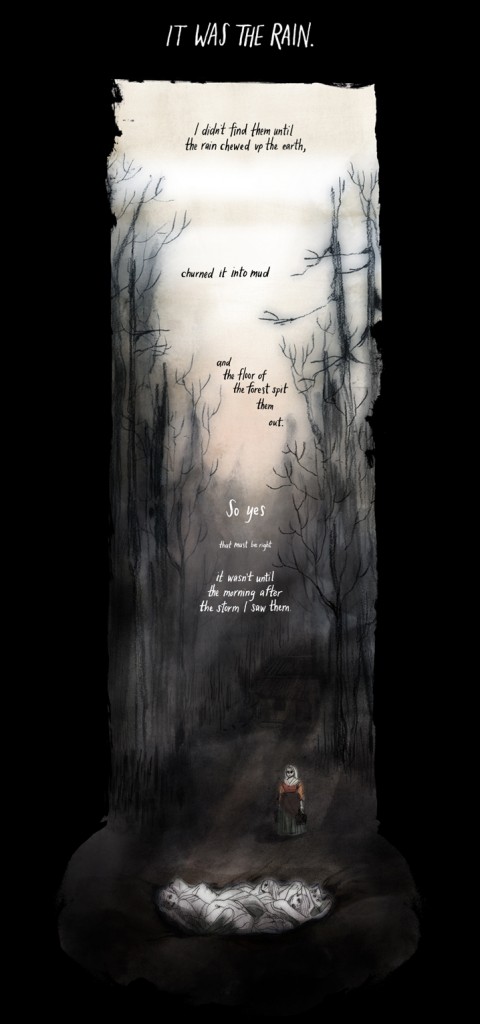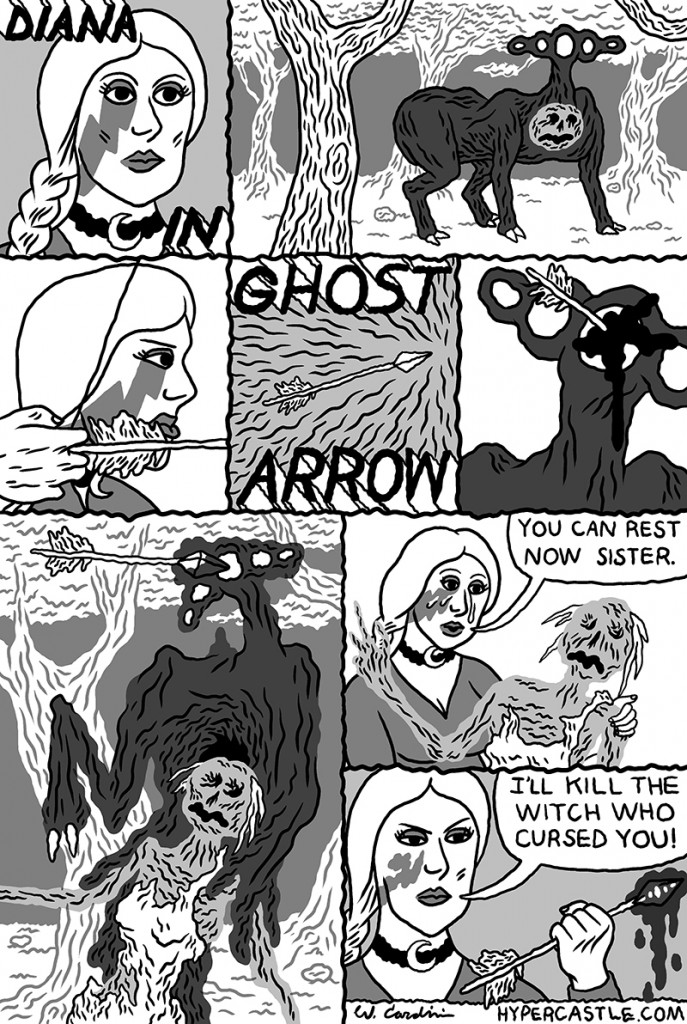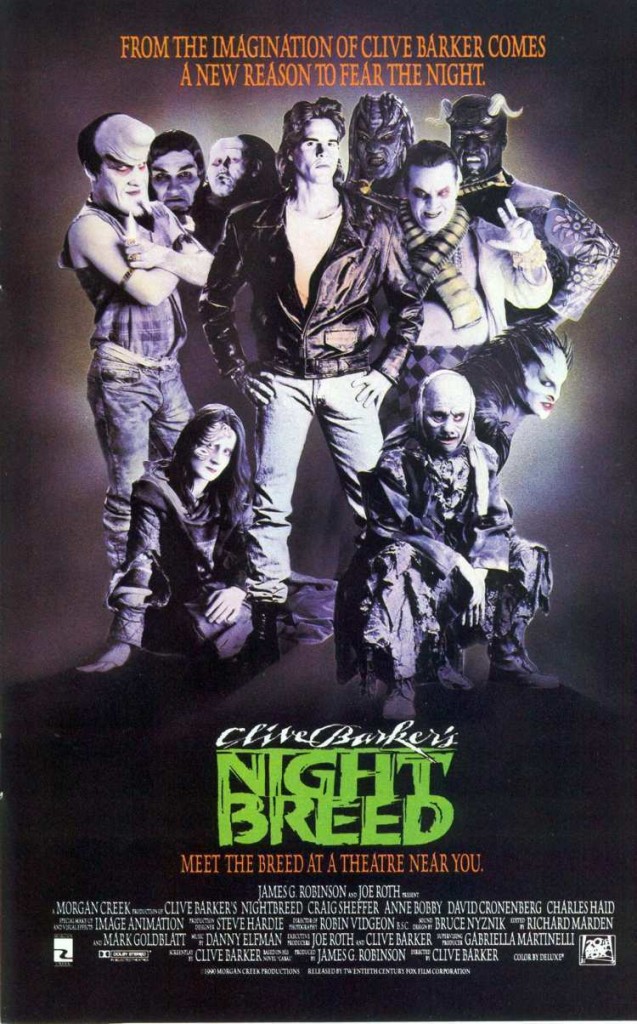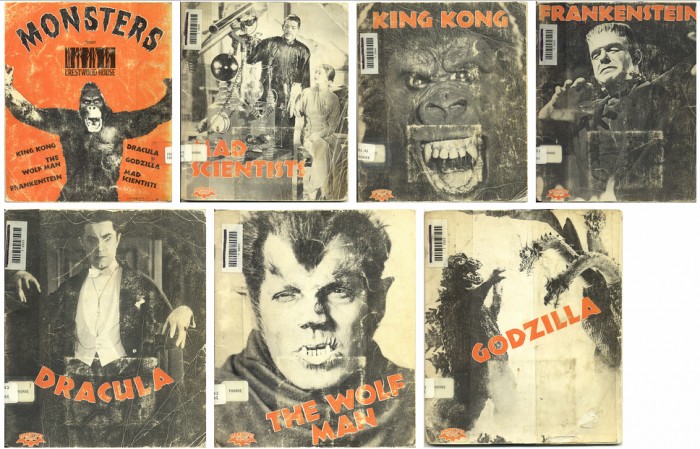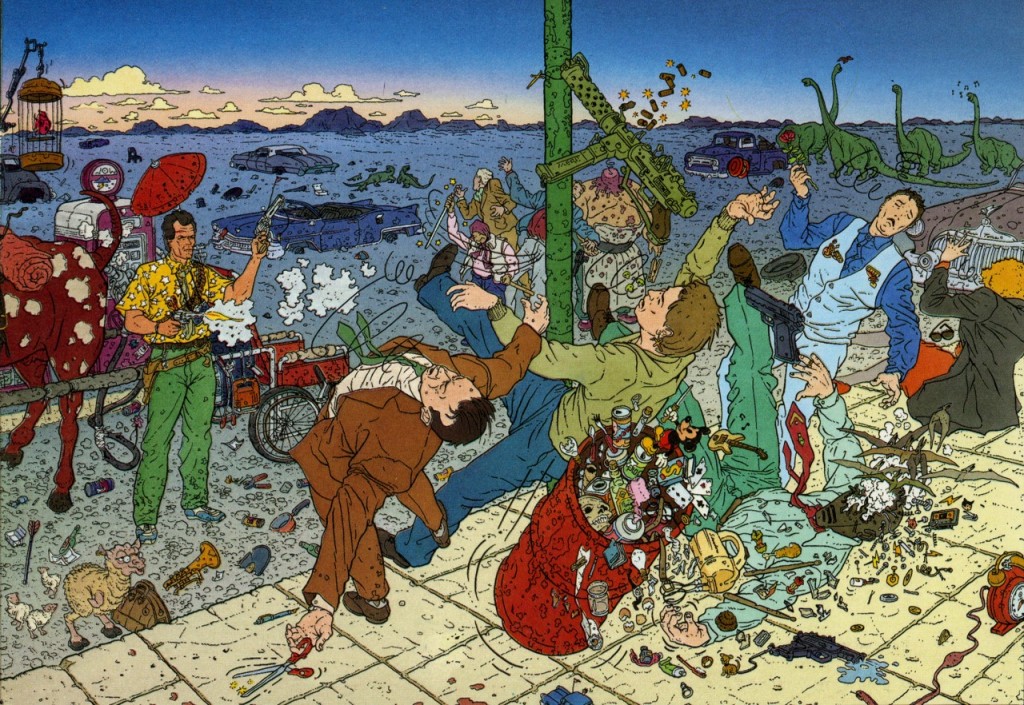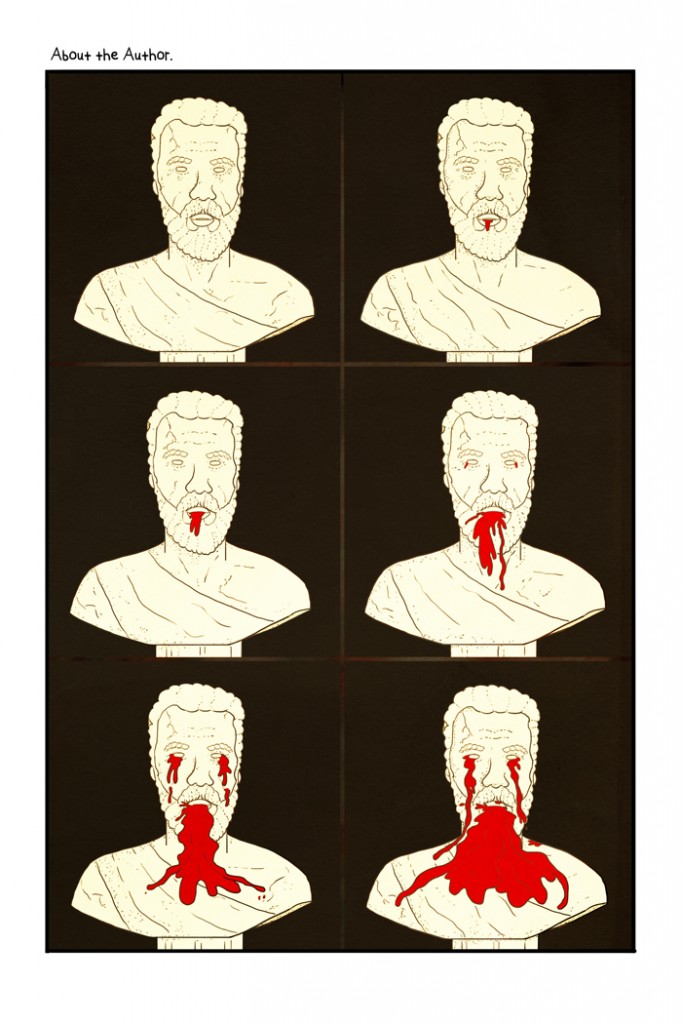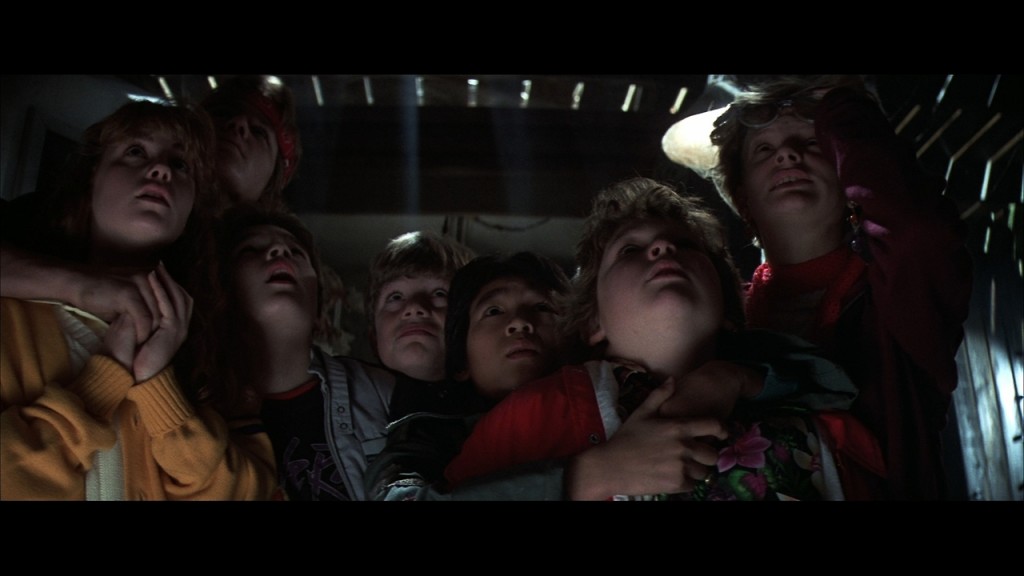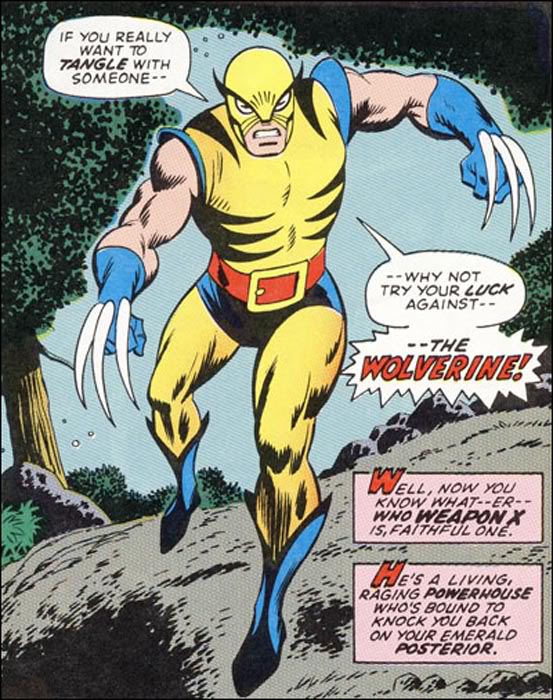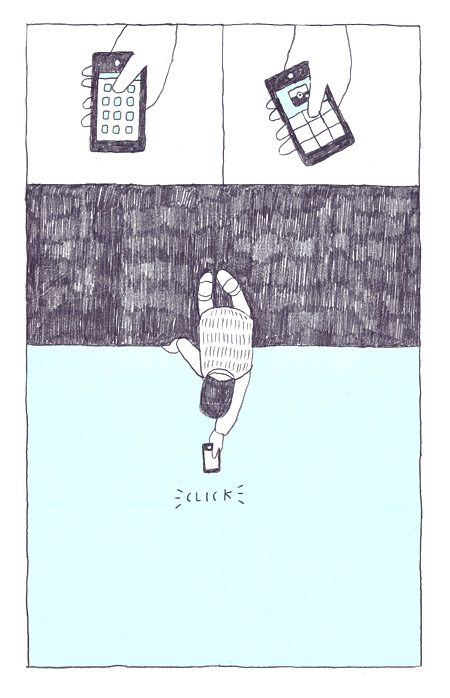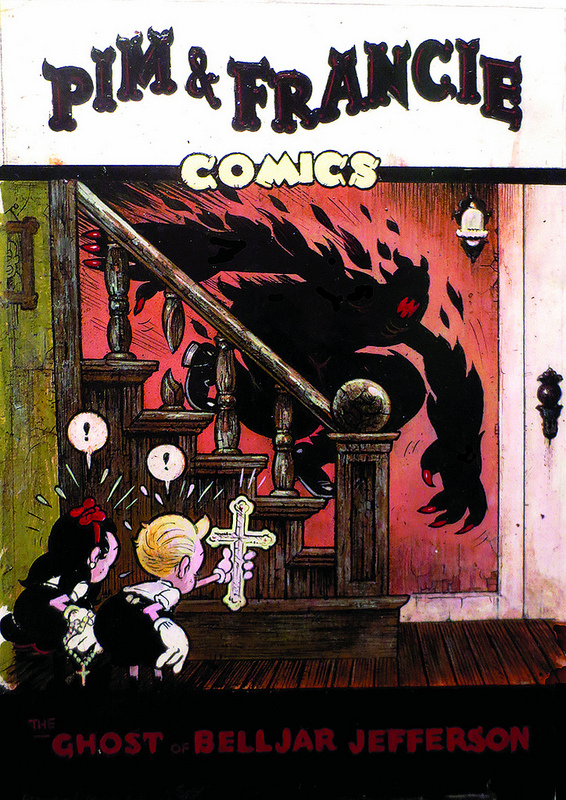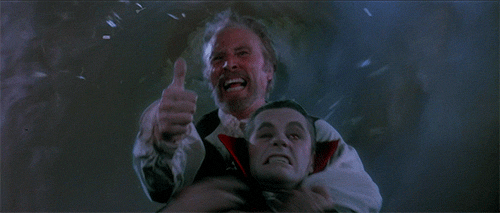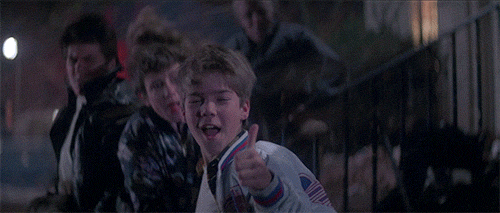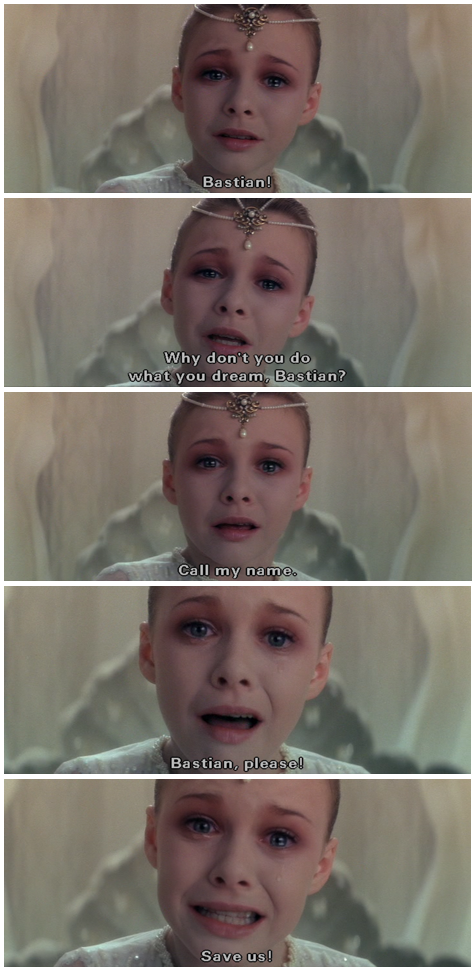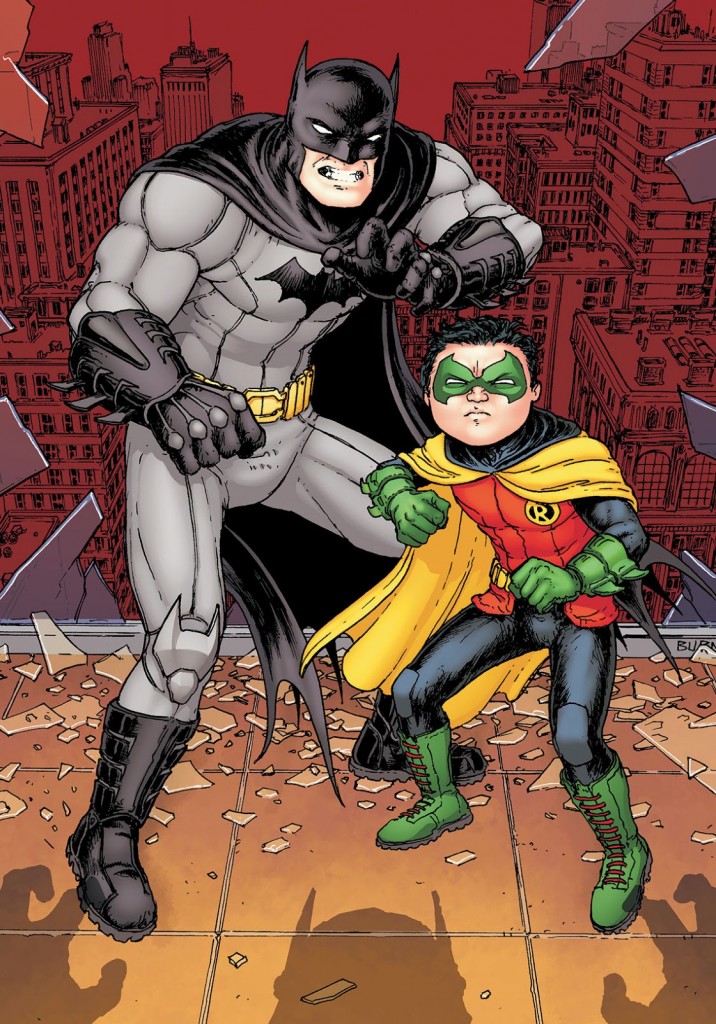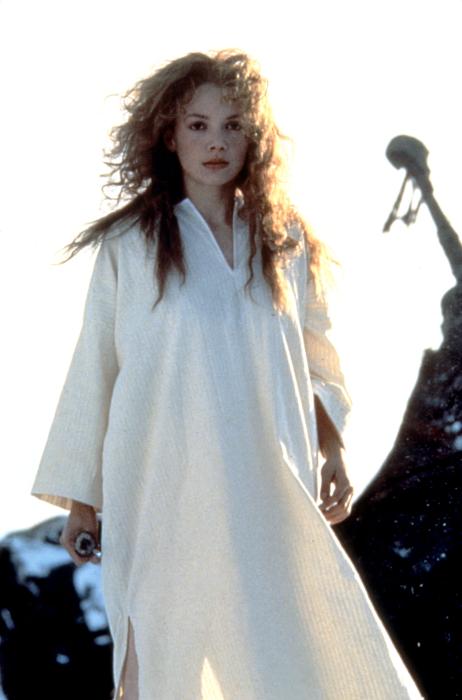Posts Tagged ‘movies’
12 Times Oscar Got It Right
February 26, 2014I wrote an article about this very thing for Rolling Stone. I got to compare Brandon in The Godfather to James Brown inventing funk and God parting form from void, so that was fun.
Q&A: Darren Aronofsky on “Noah”
February 12, 2014I interviewed director Darren Aronofsky about his upcoming Biblical epic Noah, which is set in a timeless non-Biblical fantasy world, interestingly. Key concepts: “this isn’t your grandmother’s Bible,” giant monsters, theodicy, Patti Smith writing a lullaby for Russell Crowe to sing to Emma Watson and recording it with the Kronos Quartet and Clint Mansell.
“American Hustle” thoughts
January 27, 2014David O. Russell’s American Hustle is best described as…
a) a paperback novelization of a Martin Scorsese movie
b) an SNL skit that blew the week’s wig budget
c) one of those movies with a solid cast and serious-looking art direction on the DVD cover when you spot it in the discount bin at a 7/11, and you look at it and go “whoa, this never made it into theaters? How’d that happen? Must be a story there” and pick it up on a whim and watch it and it’s pretty good, nothing spectacular, you can at least see why Jessica Lange and Cillian Murphy and Morgan Freeman signed on
c) an experiment to see how much of Amy Adams’s breasts we can see without ever actually seeing a whole breast. Oh, sure, Tumblr tells us you can see a single nipple for a single split-second in a single scene, but if anything that blink-and-you’ll-miss-it appearance only emphasizes its ephemerality. Perhaps this — not the “no more fake shit” mantra, not the Abscam scandal, not the long cons that may or may not be being run — is the film’s central metaphor, the areola atop its mammary gland of artifice and fakery. In the end, can you ever, like, really see a breast?
American Hustle is a fun enough time at the movies, but a pretty preposterous contender for the best the art form had to offer in the year that was. Virtually all of the characters, from Christian Bale doing the film’s second-worst Robert DeNiro impression to Bradley Cooper eating the scenery like Bale must have been hitting the craft services table to Jennifer Lawrence emotionally careening all the way around an inconsistently drawn Perfidious Female, are actors wearing cool costumes and doing funny accents rather than people. There are a couple of exceptions: Adams is pretty good in a role that requires the character to realize she’s only an ersatz femme fatale for two doofuses rather than the real thing — she reminds me of Bilbo Baggins’ self-descriptive “butter scraped across too much bread”; she has a moment in a bathroom stall, a look on her face, that’s the film’s sole genuinely sexy moment. Jeremy Renner works quite well as a politician whose crookedness is really and truly just a matter of constituent services; his character is set in opposition to the film’s entire project of letting sleazy-looking ’70s clothes and tri-state area ethnicity stand in for a thoroughgoing examination of a milieu. I found myself wishing his career arc between this and, say, Dahmer had flowed less through action-hero stuff and more into just disappearing into life’s casualties like he did in those two films.
The film did have one truly memorable scene, the one where it all came together, where Bale and Adams’s con artists and Cooper’s overly ambitious FBI agent and Renner’s hapless mayor and Lawrence’s desperate housewife are all drawn into a party where the sting they’re involved in suddenly balloons into a monstrosity capable of bringing down senators and destroying one of the most powerful organized crime outfits in North America, which is to say one capable of getting them all killed, even as the personal deceptions each of them has been running on one another threaten to crack up in restroom and bar-stool screaming matches. Everyone involved suddenly has so much to do, so much to think about, so much of it disconnected and drawing them in different directions, that you realize how straightforward and inert the rest of the material is. Previous party scenes feel sparse not just because of the bizarrely low-rent number of extras, you know? You just want the rest of the movie to have thought this hard about this stuff. Instead everyone gets a happy ending except the lawman, which is hilarious in a world that spent several months pillorying The Wolf of Wall Street for insufficient opprobrium directed to its scumbag characters. Crime pays!
Movie Time: 12 Years a Slave
December 30, 2013* A mentality by which one can see both Her and 12 Years a Slave and judge the former superior to the latter is a very foreign mentality to me. I’m grappling with that a lot tonight. There’s obviously an element of self-congratulation in preferring the horrifying historical drama about slavery to the twee portrait of an unlucky-in-love copywriter and his smartphone. And there’s an element of voyeurism, too, one only heightened by seeing the film in a packed theater full of middle-aged and elderly upper-middle-class white patrons from my preposterously segregated home of Long Island. Roxane Gay’s essay on the film for Vulture, for all it’s undergirded by presumptions about cinema I don’t share — I find brutality, spectacle, and decontextualized visual stylization, all of which she rejects at least as far as this movie is concerned, often inherently valuable in terms of conveying meaning; director Steve McQueen is proficient and profligate with all three — also makes the point that 12 Years a Slave furthers the idea that the movies about black people worth making involve their historical/political suffering at the hands of American white supremacy. All those caveats aside, I still found this film enormously compelling, as a story and as a political statement and as cinema, in ways that completely crush Her, which is routinely topping it in critics’ best-of-2013 lists. And that’s a gulf between me and other viewers that I’m thinking about a great dal.
* Crying in a crowded theater is difficult to do, for some reason. I wound up with tears streaming down my face consistently but without the usual sobbing and heaving — just a few sniffles. I’m embarrassed to say I was embarrassed.
* Stuffing your film with famous actors in bit parts is frequently a dubious proposition — remember Ted Danson in Saving Private Ryan? Yet the effect McQueen generated with that tactic here was invigorating, if menacingly so. Each time a new familiar face popped up, I found myself thinking “Oh Jesus, what’s this one gonna do?” Michael K. Williams, Paul Giamatti, Benedict Cumberbatch, Paul Dano, Sarah Paulson, Alfre Woodard, Garrett Dillahunt, Bryan Batt — each managed to be intimidating by virtue of simply being there, all famous and shit. By the time Brad Pitt showed up, an aged Golden God whose role in the narrative and his part in getting the film made in the first place combined for a sad and knowing take on the White Savior, the cameos moreover gave the film a true labor of love feeling, a “let’s put on a show” urgency.
* Though the film was written by an African American, its director and star are two black men from England, and it co-stars two more men from England as the lead character’s primary enslavers. I felt there was a unique fury brought to the material from those four outsiders’ perspectives. The crimes of an neighbor content to excuse or ignore them are often best exposed from next door. “I’m So Bored with the USA.”
* Chiwetel Ejiofor is actually better than you’ve heard. Long, lingering close-ups the first time he sings along with a spiritual, or on the day he entrusts the sympathetic white hired hand played by Pitt to write a letter to his friends back home to plead for rescue, are asked by McQueen to do nothing but allow the audience to linger in Ejiofor’s emotional and physical company as intimately as possible. He’s just remarkable.
* Lupita Nyong’o, the film’s female lead, is required to spend essentially all over her screentime in some form of extremis — the object of brutal scorn and even more brutal affection from her masters. Even during a brief respite at the brunch table of a neighbor who herself had been elevated from slave to “Mistress” thanks to her owner’s romantic inclinations, there’s a panic in the extension of her pinky finger she affects while taking tea. Her body is ultimately the tableau on which the film’s climactic act of violence is performed: the makeup effects are among the most physically upsetting I’ve ever seen, which given my predilections is saying something, but I used “tableau” because that’s what she is made to be, a canvas on which the emotions of her slaver, his wife, her fellow slave Solomon, and her own self are painted in blood. Hugely complicated, hugely upsetting. A goddamn highwire act is what it is, and she invests that character with such urgent sadness, right down to her final out-of-focus fall from the story.
* In the scenes where we see Ejiofor’s Solomon Northrup interact with his wife and kids as a free man in New York prior to his kidnapping, much of the antiquated formality of his and the other characters’ speech throughout the film, preserved from the autobiography which forms the basis of the film, necessarily falls away. Replace the horse-and-carriage with a car and the formal attire with t-shirts and jeans or whatever, and his last happy goodbye to his family (off on a business trip without him) could come from the opening of any Hollywood movie in which a good-natured family man gets fucked over by sinister forces. Which is important. Sounding like regular, everyday people by stripping away dialect, even just for a scene, goes a long way to conveying that Northrup was a regular, everyday person, until America’s nightmarish racist dystopia — a regime so repulsive and constructed on lies so preposterous we’d have a hard time accepting it as science fiction had it not actually happened in our actual history for hundreds of fucking years, were not television networks making money hand over fist by marketing its apologists as cuddly curmudgeons, were not cackling dimunitions and dismissals and denials of its horror repeated every day with the tweet of a #tcot hashtag, were its legacy not seen everywhere from voter registration laws to the lily white neighborhood i myself live in right this very second — swallowed him whole.
Movie Time: Her
December 29, 2013Her is a movie in which a nebbishy dotcom writer named Theodore Twombly dates Amy Adams, Rooney Mara, and Olivia Wilde and falls in love with a computer voiced by Scarlett Johansson. I promise you, I fucking promise you, no matter how many five-star reviews and best-of-the-year lists you come across: Whatever picture you have in your head of what such a film will feel like, that picture is correct. None of the film’s strengths — most of which, from Joaquin Phoenix’s feature-length Michael Stuhlbarg impression to some cute 120-minutes-into-the-future costume, game, and tech design, are minor; one of which, its frank and explicit treatment of sex as a component of love, is mitigated by pretty goddamn goofy voice-overacting; only a few of which, namely a small handful of its many many many conversations about falling in and out of love in the context of long-term relationships, have any heft behind them — make it worth seeking out before it winds up on Netflix Instant, or pretty much watching at all if you suspect you’d rather just rewatch Eternal Sunshine of the Spotless Mind (scripted by director Spike Jonze director Spike Jonze’s collaborator Charlie Kaufman) instead. Its biggest problem is baked right into its premise: Samantha, the computerized “her” of the title (which weirdly forefronts this computer program’s nature as a nonspecific and inscrutable female, which should set off alarm bells for you right there) is a creature of pure thought and speech, so nearly everything of note in the story is told rather than shown. With the ironic exception of a single, memorable, lengthy cut to black, the film basically never allows its visual component to do any heavy lifting. All the pretty colors, the L.A. cityscapes, the fancy simulated operating systems and video games — it’s all window(s) dressing.
Movie Time: Inside Llewyn Davis
December 28, 2013Or Introducing Bruno Delbonnel, stepping in for MIA cinematographer/genius Roger Deakins and (re)creating the grey winter awfulness of New York City so convincingly it felt less like a lighting scheme and more like a ceiling you might bump your head on. Inside Llewyn Davis, for all its subwaying and roadtripping and general peripateticism, is a claustrophobic film, a film about how having no commitments can root you to the spot just as surely as a square life. It can be seen as the third film in the Coen Brothers’ Trilogy of Calamity, with Barton Fink and A Serious Man, but here the calamity is ongoing, not a new thing that starts with a move to Hollywood or the sudden caprice of Hashem. (I suppose you could even squeeze No Country for Old Men in there too if you want, but again, no stumbling across drug money.) Llewyn Davis has been in a folk-scene funk for some time, a depression he shows no signs of exiting. Indeed, a clever bit of editing that could be taken as showing us a pivotal sequence out of order is ever so slightly recut so that we could simply be witnessing subtle variations on the same unending cycle — Sisyphus, Groundhog Day, the Möbius. Certainly the presence of a key figure at film’s end indicates Llewyn’s career will only go so far. The funny thing, the different thing, is that he’d more or less resigned himself to it by that point anyway. He’s not a delusional man, nor does he react to his plight with especially outstanding rage. He’s difficult but not impossible, cruel at times but only when driven to exhaustion by the failure of kindness to produce amicable results. He’s neither a delusional hack nor a tortured genius — he’s a talented guy who knows the limits of his talent but hopes to catch a lucky break. None is forthcoming. Joel and Ethan Coen have made much blacker movies than this one; Inside Llewyn Davis is the Coen Brothers at their greyest.
Movie Time: The Hobbit: The Desolation of Smaug and The Wolf of Wall Street
December 27, 2013There’s an invented scene in Peter Jackson’s second Hobbit movie (SPOILER ALERT, I GUESS) where Thorin & Company fire up the forges of the Lonely Mountain while dodging an awoken and enraged Smaug the Golden. River-like torrents of molten gold pour into a mold of (presumably) Durin, the ur-Dwarf, that’s about the size of a medium-sized office building. Smaug stares at it enraptured until the heat causes it to break form and gush golden death all over the dragon. Wealth, weaponized. Find all the metaphors for a three-film Hobbit adaptation you like in that scene, go ahead, knock yourself out. Certainly this film’s herky-jerky rhythm, and its need to surround every emotional turning point with an invented ten-minute action sequence, will give you plenty of fuel for the fire. But ultimately Smaug rises again from that lake of fire, bellows a mockery of the Dwarves’ attempt at revenge, flies up into the night sky gilded with real actual gold, shakes it off into a million droplets like a sheepdog drying off after a bath, and flies off toward Laketown to burn it to ashes while shrieking “I AM DEATH.” If I get to see something like that at the movies, Peter Jackson can melt down all the rivers of gold he wants.
Wolf was more fun than Good, and I say that as someone whose favorite Martin Scorsese movie is Casino. One of the reasons it feels a bit light in the end is that we never meet any victims of the penny-stock scams at the heart of the thing, just the scammers and their trials and tribulations. In a sense, that’s Scorsese’s approach with GoodFellas and Casino as well, but in those films the characters frequently turn on and kill each other, so you’re made to understand that the criminality has real-life consequences even if only on other criminals. You see victims; they just happen to be the victimizers as well. This, on the other hand, is just DiCaprio and Jonah Hill being really funny for three hours, with tons of naked women and quaaludes. Which I liked, don’t get me wrong, but it’s almost like Scorsese and Terence Winter (Boardwalk Empire impresario, hence a couple of notable BE castmember cameos) went out of their way to reduce the working-class schlubs DiCaprio and his merry men and women stiff to disembodied voices on phones. (EDITED TO ADD: The major exceptions are Belfort’s toddler daughter, whom his inebriated behavior terrorizes, and his second wife, whom at his nadir he physically and sexually assaults; but the rhythm of the sequence in which that occurs is such that its impact is diluted first by her turning her own rape into a way to best and humiliate her husband, then by a transference of Belfort’s threat from her to the kid. Moreover she’s portrayed as so slight a person — no Karen Hill, no Ginger Rothstein — that it’s weirdly unclear how much she’s ultimately fazed by it.) Still, as I said, really funny. A lot of it is a love letter to the grossness of Long Island, which I enjoyed, and of course the idea of just doing a one-to-one transfer of his mafia-movie style and story structure over to Wall Street is scathing and hilarious. Rob Reiner’s introductory scene had me convulsing with laughter, which I’d forgotten is a thing. Jon Bernthal erases the stink of The Walking Dead every second he’s on screen, so wholly does he commit to his ridiculous Jewish-goombah drug-dealer character. There are close-ups of Hill’s face, and an entire ‘lude-dosed fight scene, that could have come straight out of Tim & Eric’s Billion-Dollar Movie. It’s a pleasure to see Scorsese work with DiCaprio in full charismatic movie-star mode versus the aging-babyface anger he forefronted in, say, Gangs of New York and The Departed. And he’s making an argument that the best sociopaths extend their little reality bubble outward to a few trusted associates — do that and you can get away with almost literally anything. Wolves hunt best in packs.
Relocation
December 11, 2013All my Vorpalizer posts about comics and genre art are now housed at http://seantcomics.tumblr.com and http://seantculture.tumblr.com . Thanks.
Vorpalizing: Emily Carroll, William Cardini, Lucio Fulci, Clive Barker
October 30, 2013Recently on Vorpalizer I reviewed Emily Carroll’s masterful new horror comic “Out of Skin.”
I reviewed William Cardini’s very smart fantasy one-pager “Diana in Ghost Arrow.”
I wrote about being terrified by the poster for Lucio Fulci’s Zombie/Zombi 2.
And I wrote about being terrified by Clive Barker’s Nightbreed but watching it anyway, which is how it became my first real horror movie.
Vorpalizing
September 3, 2013At Vorpalizer, I wrote about the Crestwood House monster book series, Geof Darrow’s The East Meets West Portfolio, and Ralph Bakshi’s The Lord of the Rings.
Vorpalizing
August 22, 2013Over the past couple weeks I’ve been a busy boy on Vorpalizer, the blog of the Science Fiction Book Club, as usual.
In my Webcomic Wednesday series, I wrote about the art of Heather Benjamin (which I obviously love) and The Long Journey by Boulet, empty calories but tasty, and “About the Author” by Pete Toms (“Repetition works, David. Repetition works, David.”).
And in my Roots and Beginnings series, I talked about The Goonies, bullying, and escapism, and (via art by Sam Bosma) my greatest D&D experience ever.
Movie Time: Only God Forgives
August 7, 2013Only God Forgives is director Nicholas Winding Refn’s own Drive reaction video. The middle-aged foreign not-white cop we’re trained to think will be the villain is in fact the one who’s heroically doling out street justice, hurting only those who hurt others. He’s the Driver. The strong, silent, handsome, blond American interloper is no white savior, and he’s only even the villain accidentally, if at all. Mainly he’s a sad and ineffectual patsy, cannon fodder caught up in the larger struggle between the hero and Kristin Scott Thomas’s Tiamat figure. (Refn’s solution to making particular character troubling in that particular way is to run right at it; the last time we see her, Gosling has his hand in her fucking womb.) It’s like Refn picked us up from where we were standing at the end of Drive, moved us a couple windows over, and showed us the same thing, using our knowledge of narrative convention to show how heroism and horror are a matter of perspective.
Comic cards, comic movie, comic
July 30, 2013I wrote about the early-’90s Marvel trading cards for Vorpalizer, explaining how for kids like me were our primary exposure to comics at all, and what that means.
I wrote about the history of Wolverine for Rolling Stone, marking the occasion of the release of the new movie The Wolverine by tracing how the Len Wein/John Romita Sr./Herb Trimpe–created, Chris Claremont/Dave Cockrum/John Byrne–developed character went from throwaway antagonist to one of the most popular in all of fiction.
And I wrote about Saman Bemel-Benrud’s webcomic Abyss for Vorpalizer, exploring its handling of information technology as a vector for the fantastic.
Comics Time: Pim & Francie / Movie Time: Ghostbusters
June 21, 2013“I’m in the goddamn club, aren’t I?”
April 12, 2013The Diary of a Teenage Girl: The Movie
March 19, 2013
The Diary of a Teenage Girl – Teaser from Marielle Heller on Vimeo.
!!!
(The book is one of the greatest graphic novels ever made, I loved the play)
(via Lisa Hanawalt)
Far, far away
March 15, 2013This week on Vorpalizer I wrote about Sam Alden’s webcomic Haunter and George Lucas’s movie series The Star Wars Trilogy. Spectacle and scale are the main concerns.
“Call my name.”
March 8, 2013Elsewhere again
February 28, 2013I’m excited to announce that I’ve made my debut at Wired, writing about recent developments in Grant Morrison & Chris Burnham’s Batman Incorporated #8. I tried to place the event in the context of Morrison’s run, and Morrison’s run in the context of the other things going on both with him and with Batman and DC Comics in recent years. Thanks to Laura Hudson for the opportunity.
And at Vorpalizer, I’ve written about Ron Howard’s Willow and the art and comics of Uno Moralez. Running the gamut!

